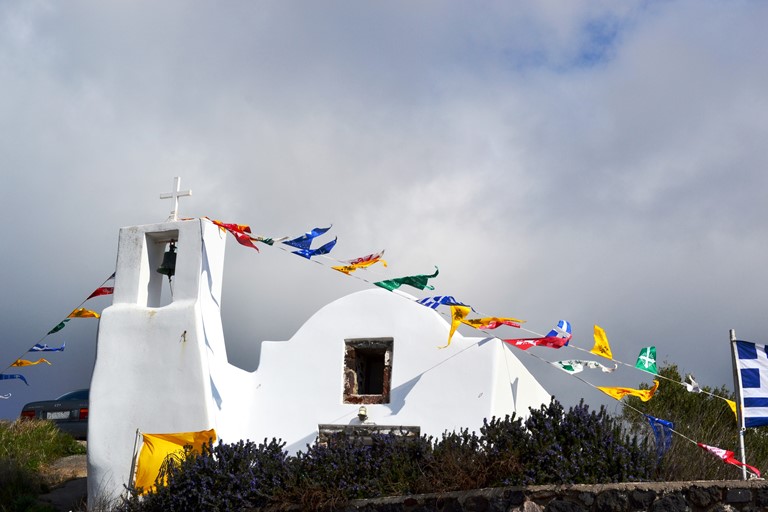Santorini’s seabottom is a combination of “crystal clear waters and dramatically impressive underwater landscapes”, as Pierre Yves Cousteau put it. It was forty years ago that his father, oceanographer Jacques Cousteau, explored the depths of Santorini in search of the lost city of Atlantis. The results of that expedition were disappointing but a different treasure was revealed: the beauty of the largest submerged caldera in the world, reaching depths of 400 meters. This underwater landscape of lava formations, caves, dramatic cliffs and seagrass meadows has been attracting divers from all over the world. With visibility reaching as far as 20 meters, water temperatures of 23 to 27 degrees Celsius in the summer and the highest biodiversity in the Cyclades, Santorini is one of the top places to dive in Greece. Not to mention the unique sensation of rising to the surface of the water and facing the caldera, 360 meters above sea level.
There are several diving centers to choose from on the island and here are some of the top diving sites:
Perissa and Kamari Rock
Apart from their astonishing black sands, Perissa and Kamari Rock feature enormous volcanic rock formations that are much like an underwater labyrinth. Colorful sponges and corals coat many of these rocks, and the hiding places they provide serve as shelter for octopus, moray eels, and plenty of crustaceans.
The volcano
The volcano’s rock formations and the wreck of a tour boat are the two major points of interest in this dive site.
The caves
Situated on the south coast of Santorini, the Caves are a spectacular combination of underwater caverns and canyons. Apart from the impressive topography, it is not unusual to spot a moray eel or an octopus in this area.
Adiavatos reef
Adiavatos is a beautiful reef near Santorini’s volcano. Here you can see several crustaceans and invertebrates and –if you are lucky- groupers or barracuda fish.


Almost everybody knows that Santorini’s unusual beauty is the result of a volcanic eruption but, once you are on the island, it is hard to tell where that volcano actually is. Santorini as we know it today, is the result of four volcanic eruptions the last of which occurred in 1620 BC. This final...
Read More

Saint Matrona’s festival takes place on October 20 in Finikia and is one of Santorini’s most popular panigiria, as these open air celebrations are called in Greece. Saint Matrona’s church is decorated with palm leaves on the eve of the celebration and the religious icon that depicts the saint is...
Read More

Argyros Mansion Museum, Messaria The elegant mansion that houses this museum was built in 1888 by local craftsmen, who had taken part in building important neoclassical mansions in what then was the newly founded capital city of Athens. It was the main residence of the family of George Argyros, who...
Read More





